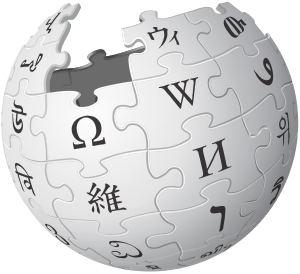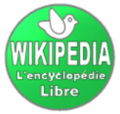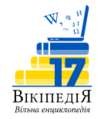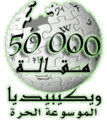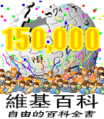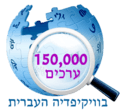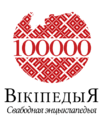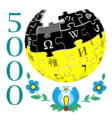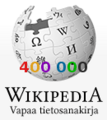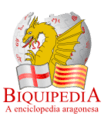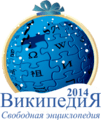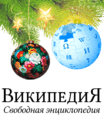The logo of Wikipedia is a famous picture that helps people recognize Wikipedia. Wikipedia is a huge, free Internet encyclopedia that anyone can help build. The logo shows a special globe made from puzzle pieces.
The Wikipedia Logo
The main part of the Wikipedia logo is a globe that looks like it's not quite finished. It's made up of many different puzzle pieces. Some pieces are missing from the top of the globe. This shows that Wikipedia is always growing and never truly finished. It's always being updated with new information.
What Do the Puzzle Pieces Mean?
Each puzzle piece on the globe has a special glyph on it. A glyph is a symbol or a letter from a different language. These symbols come from many different languages and writing systems around the world. This is because Wikipedia is available in hundreds of languages. It's a global project where people from all over the world share knowledge.
Words on the Logo
Underneath the puzzle globe, you will see the word "Wikipedia." Below that, it says "The Free Encyclopedia." This text is written in a special open-source font. "Open-source" means that the font's design is free for anyone to use and change. This fits with Wikipedia's idea of being free and open for everyone.
How the Logo Changed Over Time
The Wikipedia logo has changed a few times since Wikipedia started. The first versions were simpler. The current puzzle globe logo was introduced in 2003. It was updated slightly in 2010 to make it look even better. These changes help the logo stay fresh while still showing what Wikipedia is all about.
Images for kids
-
-
Wikipedia's logo used from 2003 until 2010
-
Logo creator Paul Stansifer at the Wikimedia Foundation in front of the Wikipedia Puzzle Globe Logo sculpture in May 2012
-
Glyphs contained in the new logotype
-
The 3D Wikipedia puzzle from Wikimania 2007
-
-
-
-
-
-
-
-
Tenth anniversary of Wikipedia (2011)
-
-
Seventeenth anniversary of the Ukrainian Wikipedia (2021)
-
Eighteenth anniversary of the Ukrainian Wikipedia (2022)
-
1 000 articles on the Aragonese Wikipedia (2005)
-
-
5 000 articles on the Aragonese Wikipedia (2006)
-
10 000 articles on the Vietnamese Wikipedia (2006)
-
-
30 000 articles on the Arabic Wikipedia (2007)
-
50 000 articles on the Arabic Wikipedia (2007)
-
150 000 articles on the Chinese Wikipedia (2007)
-
40 000 articles on the Korean Wikipedia (2007)
-
20 000 articles on the Greek Wikipedia (2007)
-
30 000 articles on the Greek Wikipedia (2007)
-
60 000 articles on the Arabic Wikipedia (2008)
-
10 000 articles on the Aragonse Wikipedia (2008)
-
30 000 articles on the Vietnamese Wikipedia (2008)
-
50 000 articles on the Vietnamese Wikipedia (2008)
-
75 000 articles on the Vietnamese Wikipedia (2008)
-
50 000 articles on the Korean Wikipedia (2008)
-
60 000 articles on the Korean Wikipedia (2008)
-
70 000 articles on the Korean Wikipedia (2008)
-
80 000 articles on the Korean Wikipedia (2008)
-
100 000 articles on the Vietnamese Wikipedia (2009)
-
100 000 articles on the Korean Wikipedia (2009)
-
50 000 articles on the Greek Wikipedia (2009)
-
-
150 000 articles on the Korean Wikipedia (2010)
-
25 000 articles on the Aragonese Wikipedia (2011)
-
200 000 articles on the Vietnamese Wikipedia (2011)
-
200 000 articles on the Arabic Wikipedia (2012)
-
250 000 articles on Vietnamese Wikipedia (2012)
-
500 000 articles on Vietnamese Wikipedia (2012)
-
200 000 articles on the Korean Wikipedia (2012)
-
150 000 articles on the Hebrew Wikipedia (2013)
-
-
1 million articles on the Russian Wikipedia (2013)
-
750 000 articles on the Vietnamese Wikipedia (2013)
-
100 000 articles on the Armenian Wikipedia (2013)
-
250 000 articles on the Korean Wikipedia (2013)
-
-
100 000 articles on the Greek Wikipedia (2014)
-
-
400 000 articles on the Arabic Wikipedia (2015)
-
-
300 000 articles on the Korean Wikipedia (2015)
-
200 000 articles on the Armenian Wikipedia (2016)
-
-
-
-
400 000 articles on the Korean Wikipedia (2017)
-
-
100 000 articles on the Latvian Wikipedia (2020)
-
1 250 000 articles on the Vietnamese Wikipedia (2020)
-
500 000 articles on the Korean Wikipedia (2020)
-
500 000 articles on the Hungarian Wikipedia (2022)
-
Turkish Wikipedia logo used during the #WeMissTurkey campaign to lift block of the website in Turkey (2018)
-
The protest on Spanish Wikipedia against Directive on Copyright in the Digital Single Market (2018)
-
Turkish Wikipedia logo displayed after the two-year anniversary of the ban, with the message "2 yıldır özlüyoruz" (English: "missing you for two years") (2019)
-
Turkish Wikipedia logo following the lifting of the block of the website in Turkey with the message "kavuştuk" (English: "reunited") (2020)
-
-
Christmas and New Year at the Russian Wikipedia (2006–2007, 2007–2008, 2008–2009, 2009–2010, 2011–2012, 2012–2013)
-
National Day of Aragon at the Aragonese Wikipedia (2008)
-
New Year at the Vietnamese Wikipedia (2008)
-
National Day of Aragon at the Aragonese Wikipedia (2009)
-
National Day of Aragon at the Aragonese Wikipedia (2010)
-
New Year at the Vietnamese Wikipedia (2010)
-
National Day of Aragon at the Aragonese Wikipedia (2011)
-
New Year at the Vietnamese Wikipedia (2012)
-
New Year and 250 000 articles at the Vietnamese Wikipedia (2012)
-
New Year at the Vietnamese Wikipedia (2013)
-
Christmas and New Year at the Russian Wikipedia (2013–2014)
-
New Year at the Vietnamese Wikipedia (2015)
-
Christmas and New Year at the Russian Wikipedia (2014–2015, 2015–2016)
-
New Year at the Vietnamese Wikipedia (2015)
-
New Year at the Vietnamese Wikipedia (2016)
-
Christmas and New Year at the Russian Wikipedia (2016–2017)
-
Christmas and New Year at the Russian Wikipedia (2018)
-
Christmas and New Year at the Armenian Wikipedia (2018–2019)
-
Christmas and New Year at the Russian Wikipedia (2018–2019, 2021–2022)
-
Christmas and New Year at the Russian Wikipedia (2019–2020)
-
Christmas and New Year at the Armenian Wikipedia (2019–2020)
-
New Year at the Vietnamese Wikipedia (2020)
See also
 In Spanish: Marcas corporativas de Wikipedia para niños
In Spanish: Marcas corporativas de Wikipedia para niños
 In Spanish: Marcas corporativas de Wikipedia para niños
In Spanish: Marcas corporativas de Wikipedia para niños

